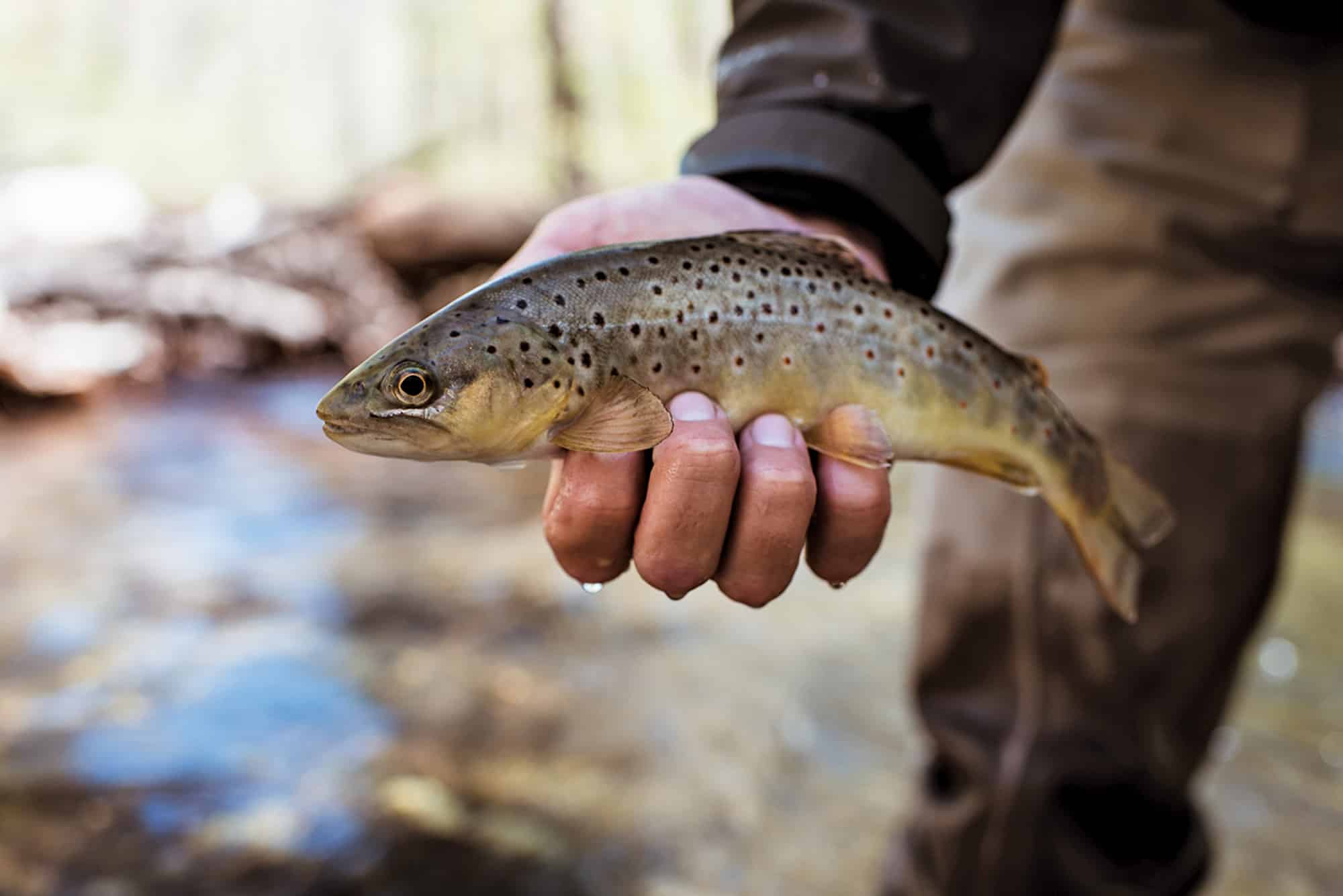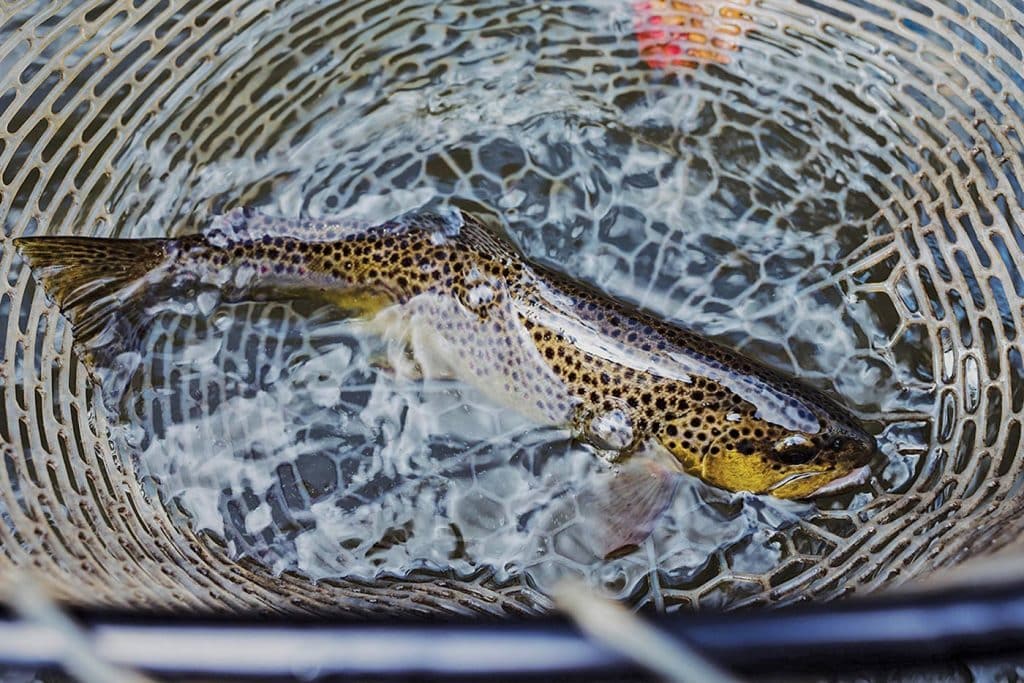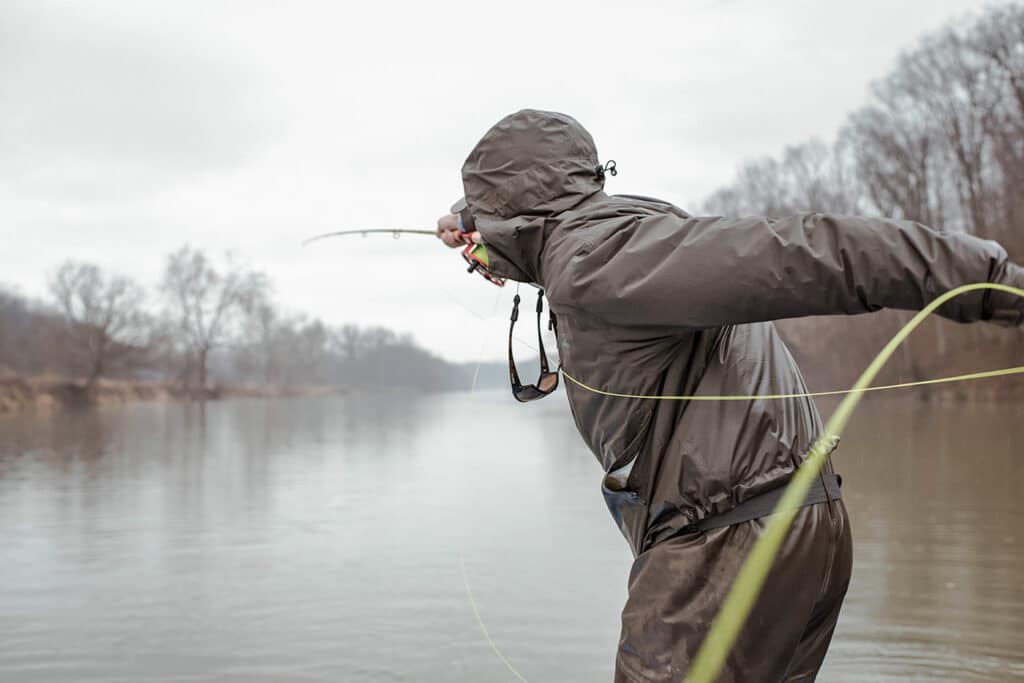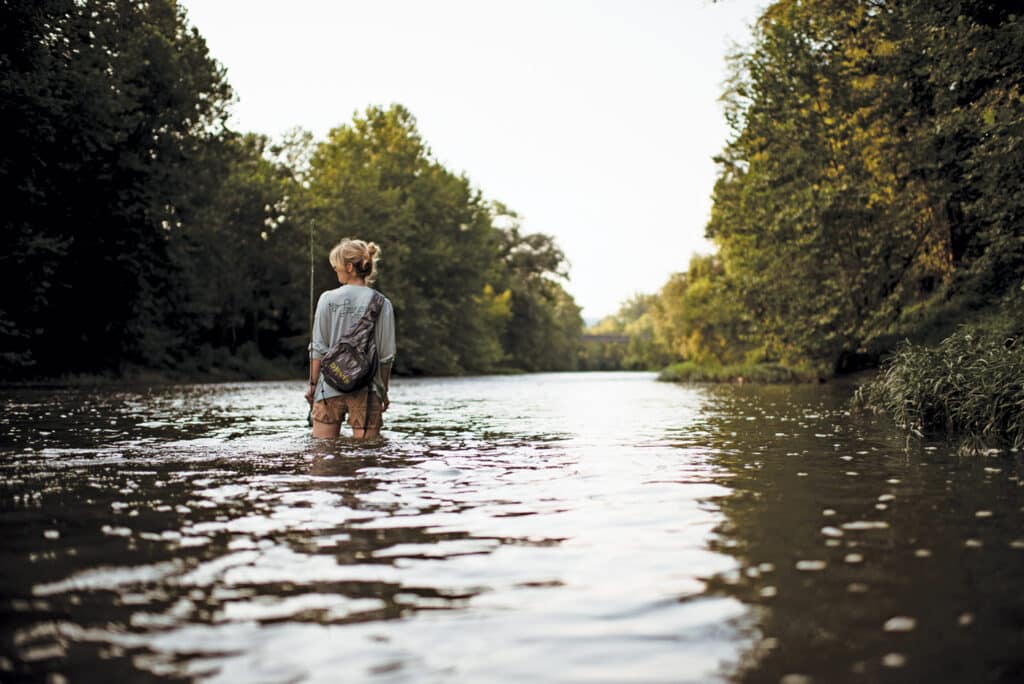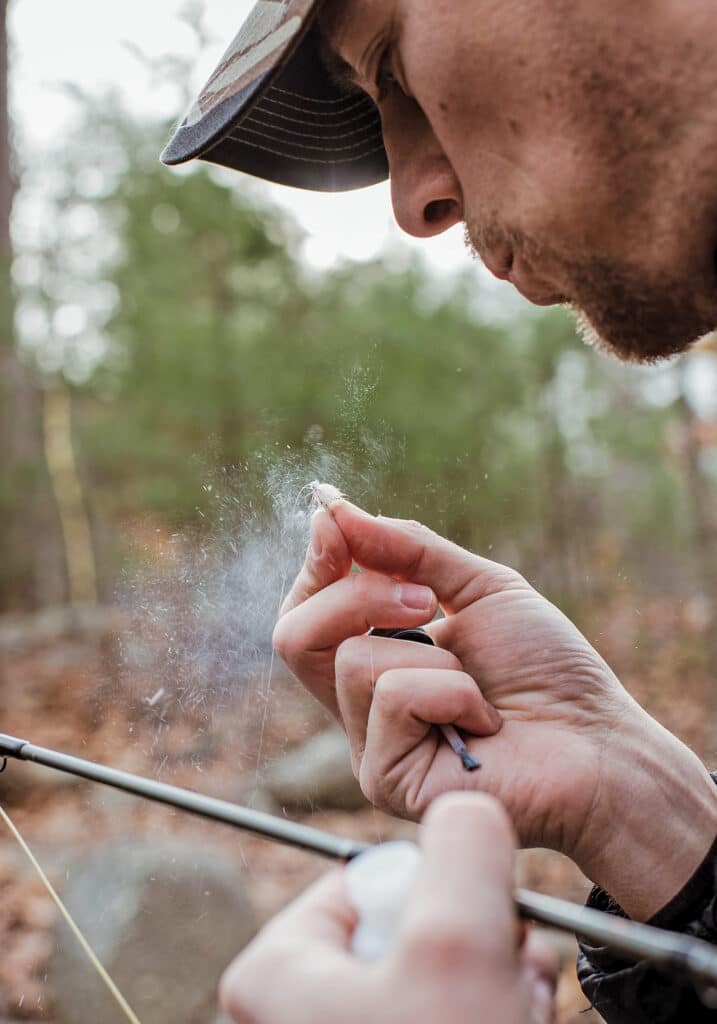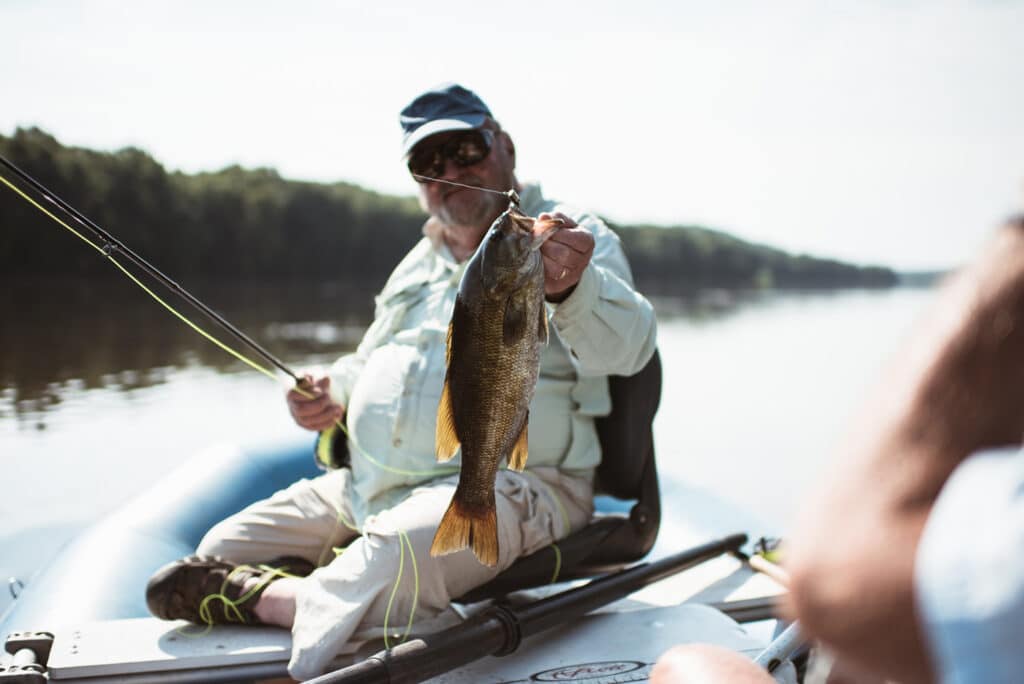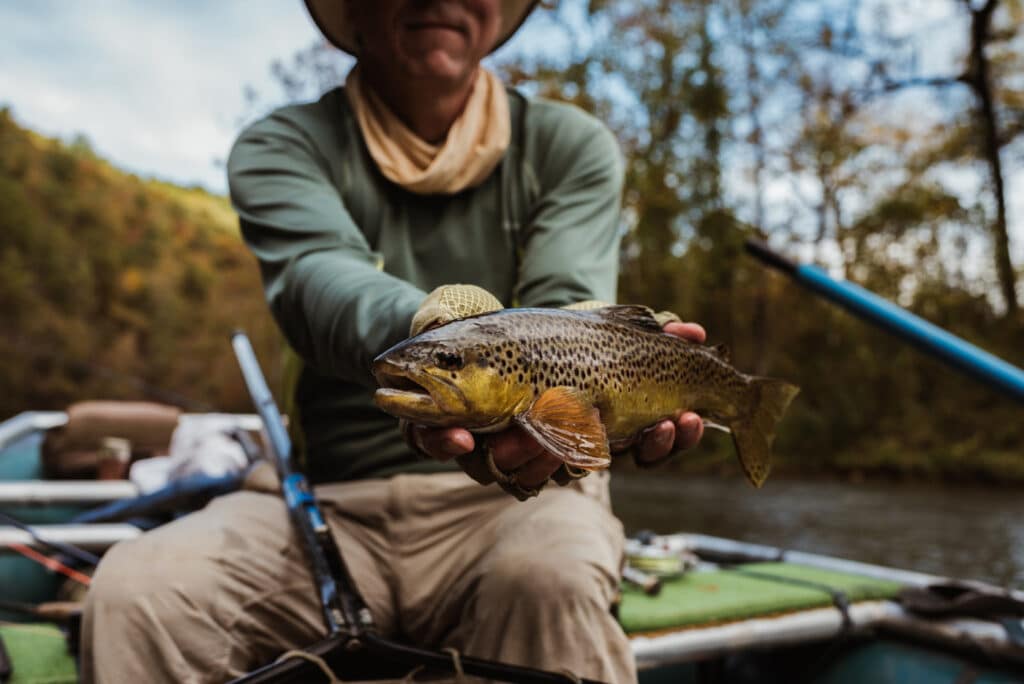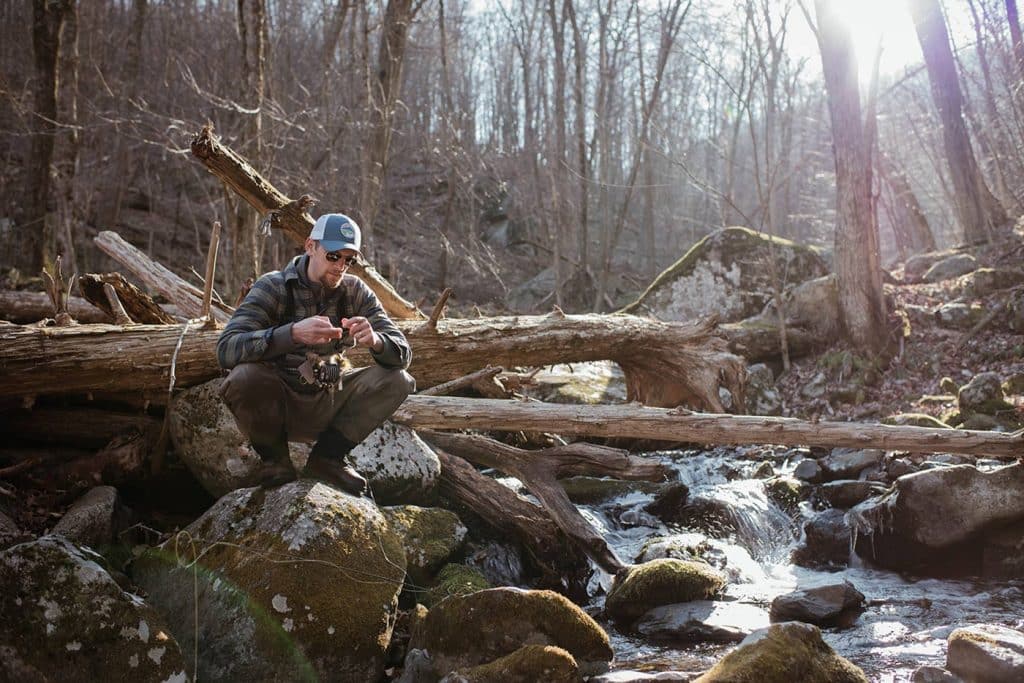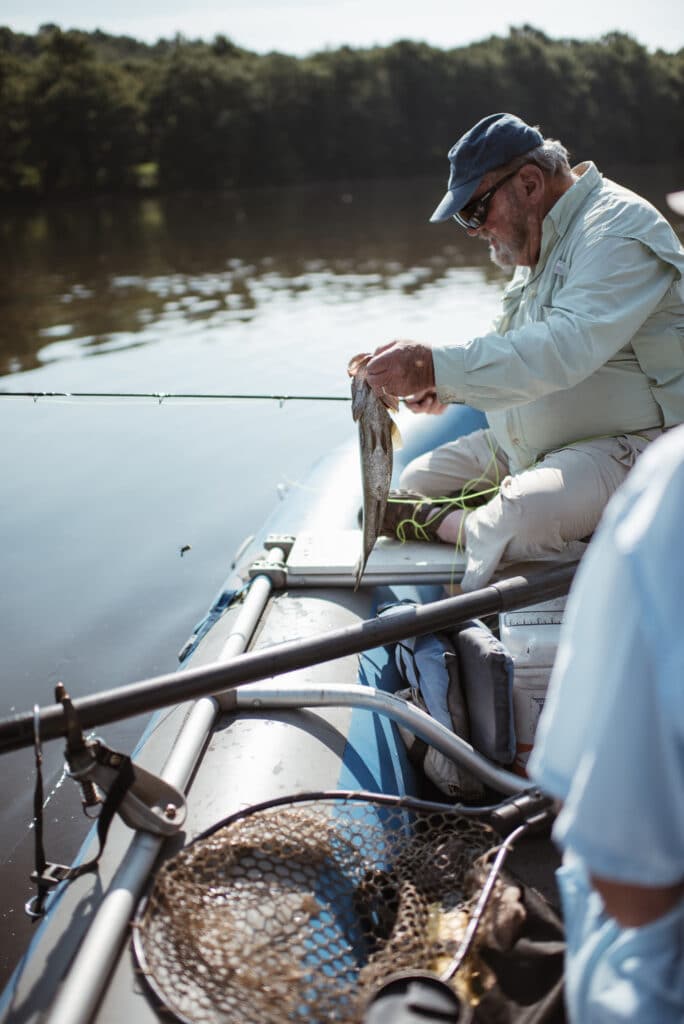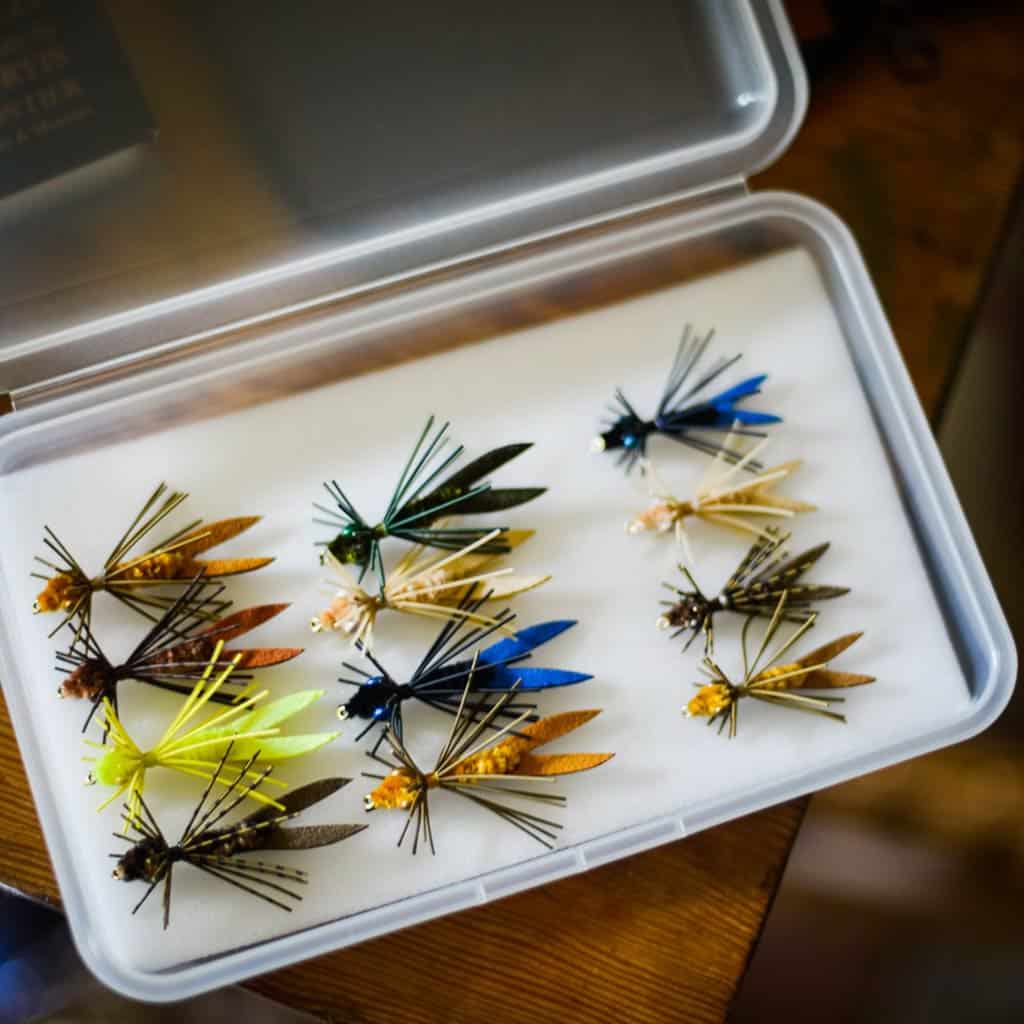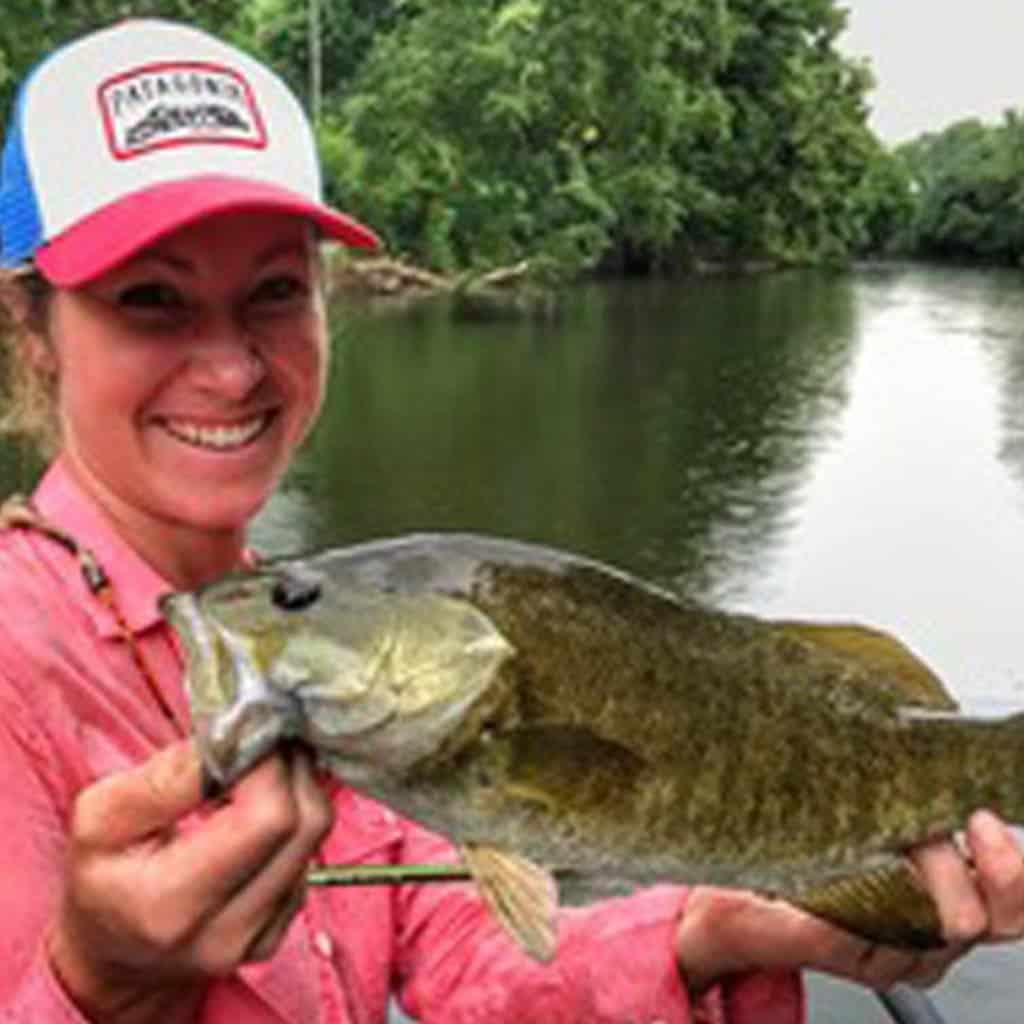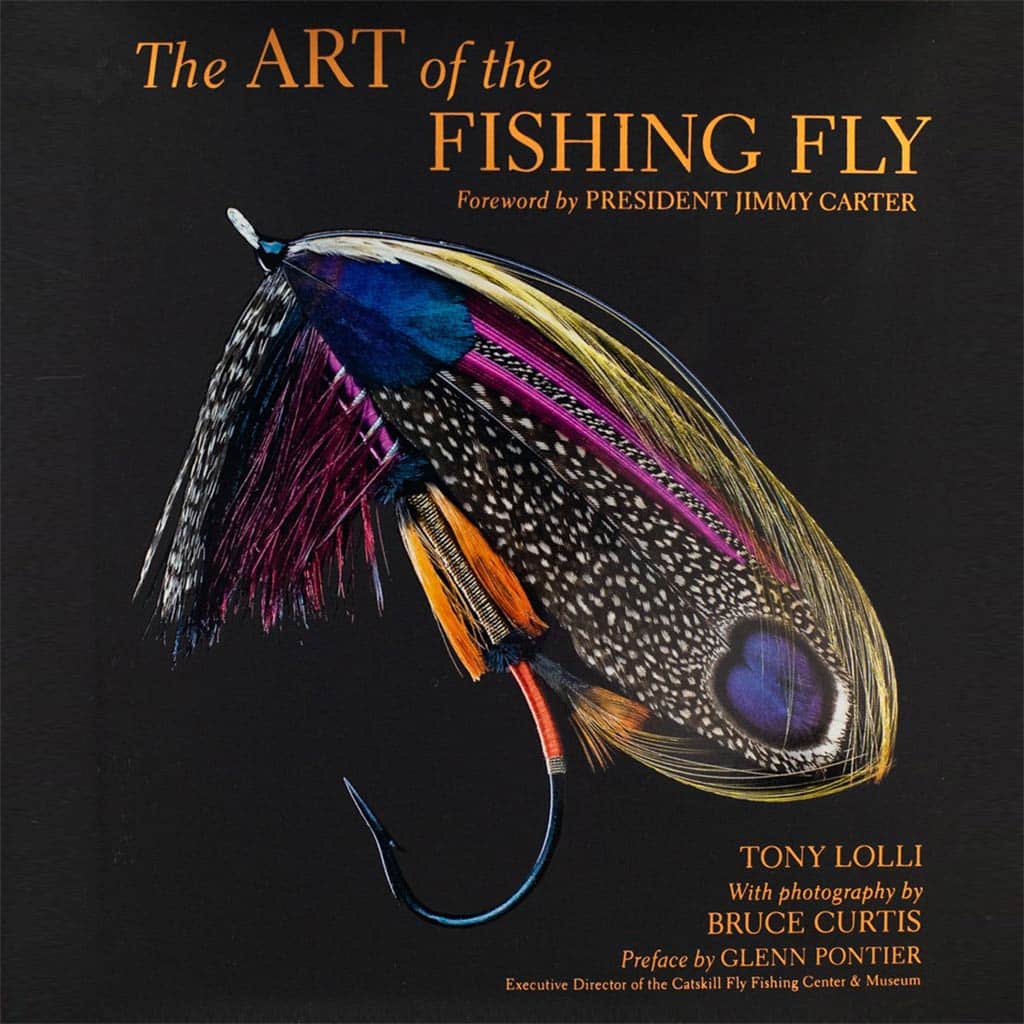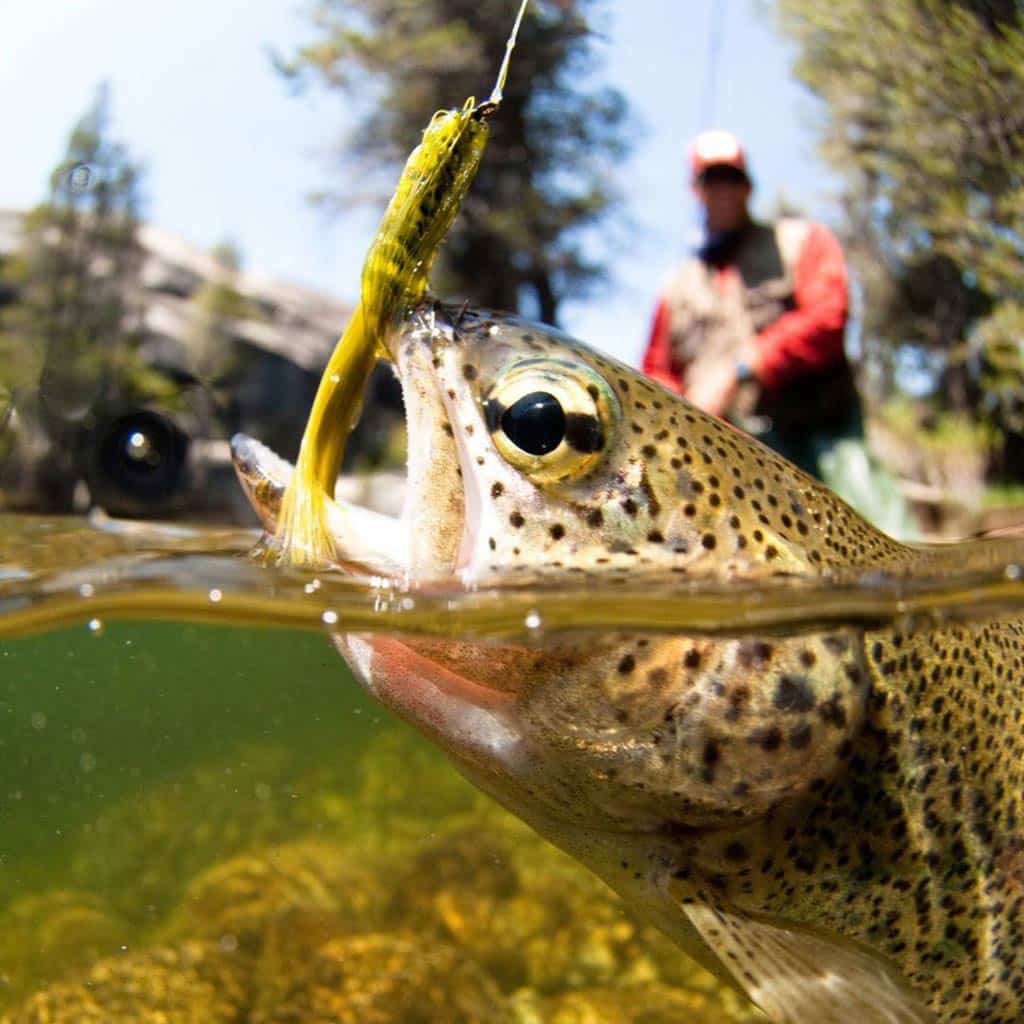For me, it all began when I was 8 years old. “Clarky, let’s go,” my grandfather said, opening the door to the garage. “I’m going to teach you a different way to fish today,” he explained. “This is a fly fishing rod. The fly is made from deer hair and chicken feathers, and is too light to be used with a regular fishing rod. The thick line will help get the light fly out to the fish when we cast back and forth.”
When we reached our destination, the sun had begun to set. The sherbet sky reflected off of the mirrored surface of the green pond as my grandfather stripped line off of the reel. The reel made a zipping sound as he did. He began waving the rod back and forth with metronomic measure, showing me how to move the rod tip between 10 and 2, “like on the face of a clock.”
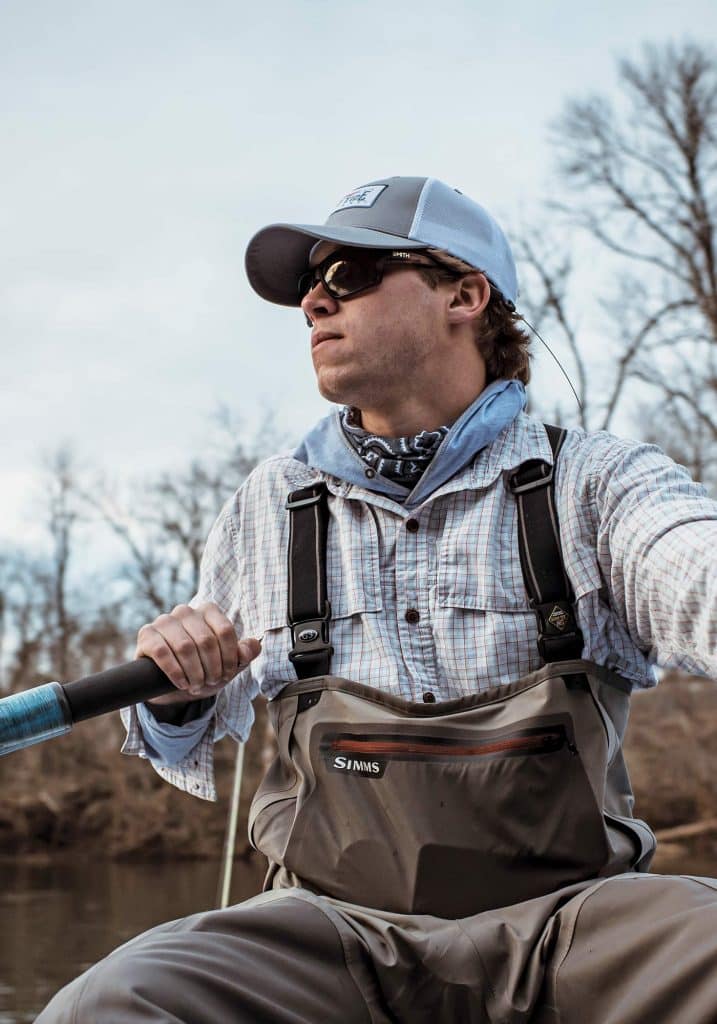
“Once we have enough line out, we stop on the forward cast and let the fly land on the water.” The fly landed with a subtle but distinct plop right up against the cattails. He showed me how to strip the line in a measured paced resting for a few seconds after each strip. “Strip, strip, wait. Strip, strip, wait.”
After the fourth strip the water boiled, and a bass inhaled the deer hair fly. An instant later, the water exploded as the bass launched itself out of the water shaking its head doing its best to shake the fly from the corner of its mouth. The rod bent and flexed as the fish fought to get back to the cover of the cattails.
At that moment, I knew fishing would be my escape. As an avid outdoorsman, fly-fishing has taken over a large part of my life in the last six to seven years. Moving water has a way of calming me down. Time seems to slow down and everything becomes a bit more vibrant. After relocating to Charlottesville, my wife, Ellen, and I took to the waters only to find the fishing in Charlottesville is immensely different from what I had been doing in Charleston. Yet, the expansive marshes and mountain streams and rivers have a similar way of soothing the soul.
My grandfather, who has lived in Charlottesville for nearly 20 years and has been fishing in the area since his childhood, has taught me more than I could share. I have even been fortunate to learn from one of his closest friends, Chuck Kraft, a local legend in fishing circles and a world-renowned fly-tier who recently passed away.
What’s Fishing in Virginia Like?
There’s no question that the Charlottesville area is ripe with opportunities to chase all sorts of different fish with a fly rod. Over the past year, the smallmouth bass, native brook trout and musky fisheries have piqued my interest. These three fish will keep you busy year-round and offer the opportunity to learn vastly different approaches and fishing styles.
The Commonwealth has an excellent and underrated trout fishery. The state’s topographic elevation is limited, so you will never end up with the type of monster wild fish that you will find in other states. However, you can find, in my opinion, the most beautiful freshwater fish within an hour of Charlottesville. Native brook trout may not seem like a typical game fish target, as they only average 6 to 8 inches in local waters, but what they lack in size, they make up for in beauty and voracious appetite. When fall rolls around and water temperatures in the Shenandoah National Park drop below 67 degrees Fahrenheit, you can find me on any stream in the park with a bamboo four-weight and a pocket full of dry flies.
You can find, in my opinion, the most beautiful freshwater fish within an hour of Charlottesville.
The Shenandoah National Park has hundreds of gin-clear trickling streams where native brook trout thrive, and these small streams are generally the first in the area to cool down due to their elevation. You can find these streams by simply looking for a blue line off the Skyline Drive on your favorite mobile map application. Look for ones with a nearby trailhead and parking lot for easy access, as you’ll have to hike downstream for a mile or two until you are ready to fish. Over the years, I have learned to begin fishing upstream, working each piece of water as you ascend.
The brook trout tend to hang at the top ends of pools where water cascades in from the pool above. The little trout will smash your fly, and when you bring them to hand, you will understand the appeal and pull towards fishing. Their blue-green vermiculated flanks spotted yellow and dappled with blue-haloed spots of red give way to a fire orange underbelly and fins lined first in black and then white. The park is an immensely beautiful place, so it is only fitting that its waters hold such beautiful fish. Native brook trout can be caught from late September through late July, depending on the weather.
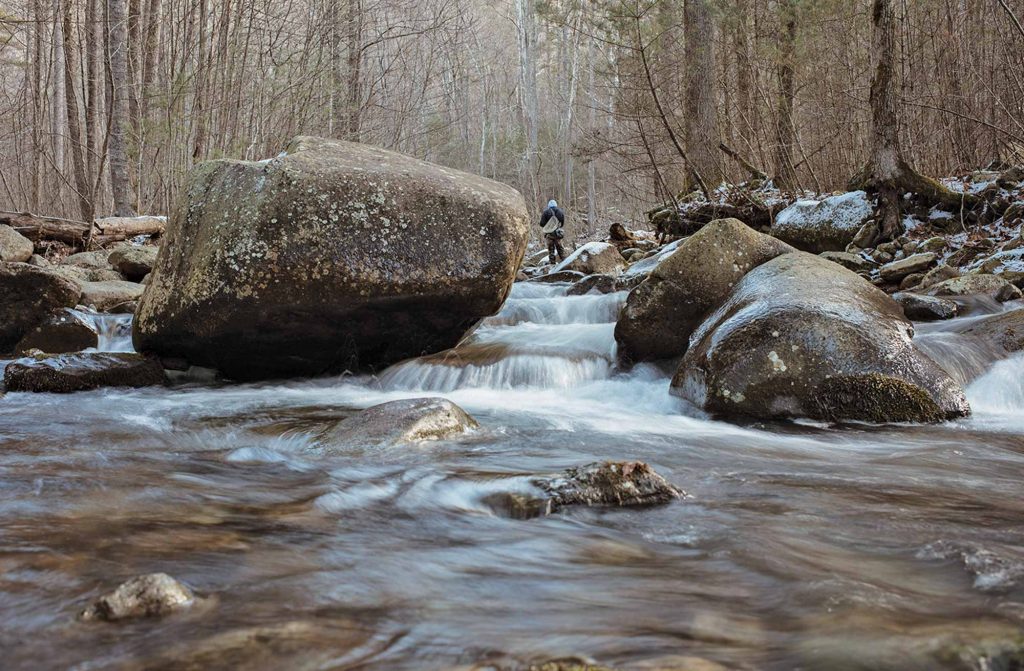
Tips on Fishing in Virginia Waters
When the weather and water really start to thaw out, it is time to chase the champ. Some of the best smallmouth bass fishing on the East Coast is right here in our own backyards. There is a reason the smallmouth bass is known as the pound-for-pound hardest fighting fish in freshwater. They are mean, angry predators that smash flies, jump like tarpon and fight like Floyd Mayweather until your thumb is in their mouth.
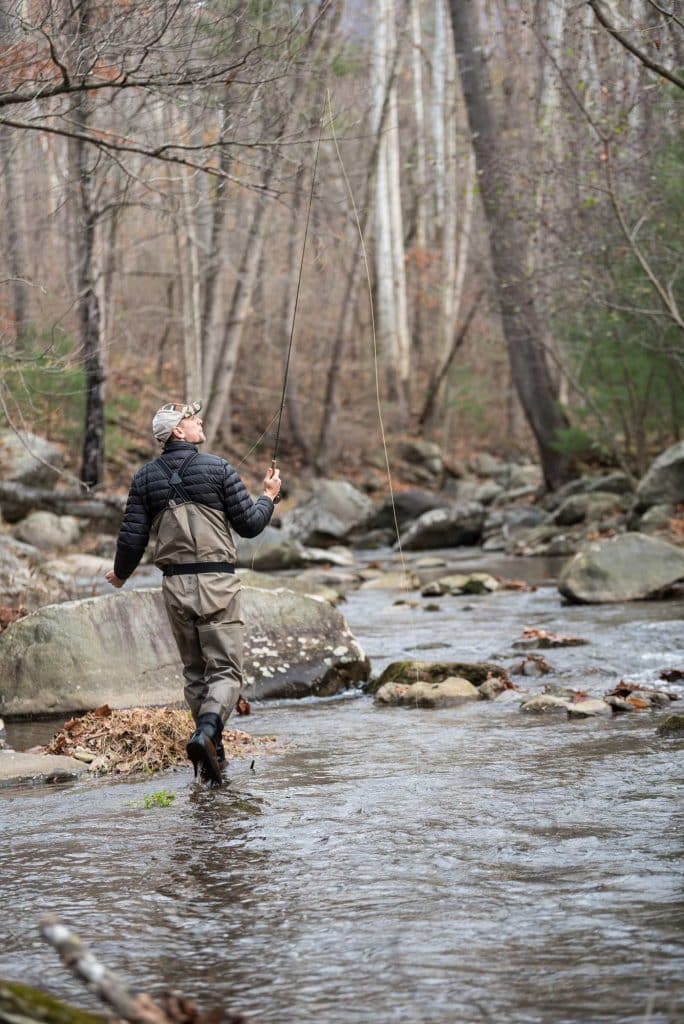
The James, Shenandoah and Rivanna Rivers all hold smallmouth over 20 inches long. The best option for chasing “smallies” is to find a way to float one of the rivers. Covering as much water as possible is key to finding a large smallmouth. If you do not have personal access to watercraft, the next best options are to either call one of the local fly shops to book a guided trip or seek out wadable water near public access sites on the river. Flies should be cast towards the bank, with your target areas being where underwater structure is present, as they tend to hold a fish or two. Smallmouth can be caught from late February until mid-September. They feed on everything from floating beetles, grasshoppers and cicadas to frogs, crawfish and baitfish; fly selection should mimic the aforementioned.
As the temperature drops and the fishing slows down, the average fly angler will typically sit down at the vice to fill their fly boxes with new fly patterns to prepare for the spring season while the fire keeps them warm. The not-so-average angler will rig up their 11-weight with 450 grain-sinking line and tie on a 12”–14” articulated fly before hitting the James or Shenandoah in search of musky. Musky can grow over 40” and weigh over 20 pounds. They have a set of razor sharp teeth, which they use to feed on everything from other fish and reptiles to birds and rodents that make their way into the water.
Musky fishing is a truly brutal sport that will test an angler’s physical endurance, mental fortitude and will to catch a real-life river monster. A musky angler’s expectations should be tempered; musky are known as the “fish of 10,000 casts” for a reason. It is commonplace to spend multiple trips casting without ever seeing a fish. But, when that wily old muskellunge appears out of the dark green water and inhales your fly five feet from the raft, it will all be worth it.
For those looking to take on such an adventure, musky fishing must be done from a raft or drift boat, as covering vast amounts of water is key. Anglers should cast towards the bank and target areas of slow moving and/or deeper water, especially in areas with ledges and drop-offs where fish can hide while they wait for their prey. Musky are the apex predator on local rivers and are not boat shy. A tip is to strip nearly all your fly line in on each cast and finish each retrieve with a figure eight. In many cases, musky will follow the fly all the way to the raft before eating it during the figure eight. Musky can be caught year-round, but late fall through early spring is the preferred choice of local fly anglers.
Regardless of what fish you’re after in Virginia’s many waters, talk to your local fly shop to help with making fly pattern, rod and line selections. These three fish have kept me quite busy this year, and I’ve been fortunate to get to see the most beautiful parts of the area. Fishing is like any other outdoor pursuit, in that, every time you fish you will learn something new. Whether you are brand new to fly fishing or a seasoned angler, this place we call home has wonderful opportunities to catch beautiful fish. So, take full advantage of them. And, maybe, I’ll see you on the river. ~
This article appeared in Book 7 of Wine & Country Life. Start your subscription here or give a gift subscription here. For other sporting life articles and Virginia wine country experiences, visit our Experiences page.
is a writer, photographer and avid outdoorsman. Since earning a history degree from Ole Miss, 2011, he spends most of his time exploring the southeast with a fly rod in hand. His work can be seen in advertisements for a couple of different companies and has appeared in Virginia Sportsman magazine. His writing and photography can also be seen in Southern Culture on the Fly magazine.

